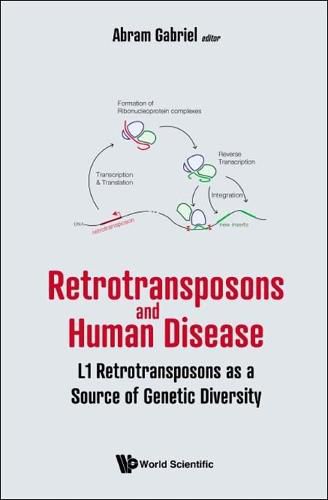Readings Newsletter
Become a Readings Member to make your shopping experience even easier.
Sign in or sign up for free!
You’re not far away from qualifying for FREE standard shipping within Australia
You’ve qualified for FREE standard shipping within Australia
The cart is loading…






This title is printed to order. This book may have been self-published. If so, we cannot guarantee the quality of the content. In the main most books will have gone through the editing process however some may not. We therefore suggest that you be aware of this before ordering this book. If in doubt check either the author or publisher’s details as we are unable to accept any returns unless they are faulty. Please contact us if you have any questions.
Thirty years ago we knew that retrotransposons made up at least half of our genomes, but little about their role in biology. The human genome has since been sequenced and the position of all retrotransposons in the reference sequence has been determined. However, as of today, the function of retrotransposons still remains elusive. We know much more about the diseases associated with their movement and the host defenses we all have against them.This volume explores an array of diseases in humans associated with L1 retrotransposon movement within the human genome, including some cancers such as colon cancer and neuropsychiatric disorders such as schizophrenia.The chapters explore the diversity of retrotransposons, their different biological mechanisms, the role of L1 in their movement, and their contribution to human diseases. This book posits that somatic events caused by retrotransposons have implications for mosaicism and are often associated with cancers. Germline events are common, occur quite early in development, and are a cause of single gene diseases. All in all, the authors implicate L1 retrotransposons as major sources of human diversity and advocate for their continued study.
$9.00 standard shipping within Australia
FREE standard shipping within Australia for orders over $100.00
Express & International shipping calculated at checkout
This title is printed to order. This book may have been self-published. If so, we cannot guarantee the quality of the content. In the main most books will have gone through the editing process however some may not. We therefore suggest that you be aware of this before ordering this book. If in doubt check either the author or publisher’s details as we are unable to accept any returns unless they are faulty. Please contact us if you have any questions.
Thirty years ago we knew that retrotransposons made up at least half of our genomes, but little about their role in biology. The human genome has since been sequenced and the position of all retrotransposons in the reference sequence has been determined. However, as of today, the function of retrotransposons still remains elusive. We know much more about the diseases associated with their movement and the host defenses we all have against them.This volume explores an array of diseases in humans associated with L1 retrotransposon movement within the human genome, including some cancers such as colon cancer and neuropsychiatric disorders such as schizophrenia.The chapters explore the diversity of retrotransposons, their different biological mechanisms, the role of L1 in their movement, and their contribution to human diseases. This book posits that somatic events caused by retrotransposons have implications for mosaicism and are often associated with cancers. Germline events are common, occur quite early in development, and are a cause of single gene diseases. All in all, the authors implicate L1 retrotransposons as major sources of human diversity and advocate for their continued study.